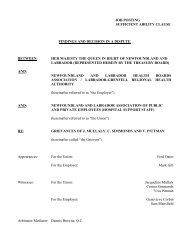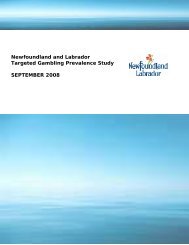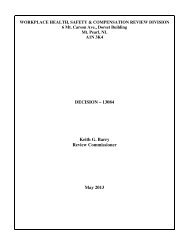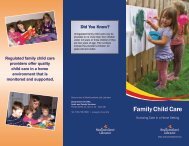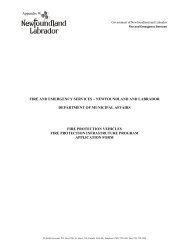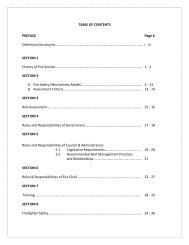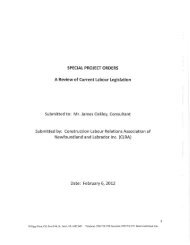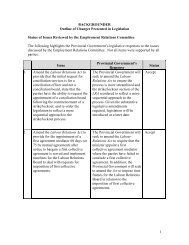Basic Level Pre-Course Reading
Basic Level Pre-Course Reading
Basic Level Pre-Course Reading
Create successful ePaper yourself
Turn your PDF publications into a flip-book with our unique Google optimized e-Paper software.
Chapter 4<br />
Personal Protection<br />
4. PERSONAL PROTECTION<br />
After completing this chapter, participants will be able to:<br />
• describe how to avoid becoming contaminated;<br />
• describe precautions for Secondary Contamination;<br />
• describe the levels of responder Personal Protective Equipment, and when each level is appropriate;<br />
• describe the need for Respiratory Protection; and,<br />
• describe the risks of operating in Personal Protective Equipment worn at a CBRN incident.<br />
This chapter will focus on enabling responders to protect themselves. A key protective<br />
strategy is to avoid exposure to contamination where possible. The responder must<br />
thoroughly understand both the capabilities and the limitations of the personal protective<br />
equipment that is available. These limitations must not be exceeded.<br />
4.1 CBRN Agent Avoidance Techniques<br />
The first step in personal protection is taking preventative action. An effective responder<br />
at an incident must minimize the likelihood of contact and exposure to the contaminant.<br />
During the sarin attack on the Tokyo subway, 15% of the responders became<br />
secondary casualties. Acts of heroism can add to the growing lists of casualties and<br />
eliminate valuable responder resources.<br />
Avoiding contamination starts during the approach to the scene. The importance of<br />
recognizing the potential threat of a CBRN incident is discussed in Chapter 3. First<br />
responders must stop before entering the incident scene, approach uphill and upwind,<br />
reserve resources, and limit contact with casualties. These strategies will reduce the<br />
numbers of people exposed to contamination and are further discussed in Chapter 5.<br />
Agent avoidance topics discussed in this Chapter are:<br />
• Avoiding Secondary Contamination<br />
• <strong>Level</strong>s of responder Personal Protective Equipment (PPE)<br />
(including their limitations)<br />
• Risks of operating in PPE at a CBRN incident<br />
4.2 Secondary (Cross) Contamination<br />
The potential for “secondary” or “cross” contamination of responders by other<br />
responders or casualties who are contaminated will be of primary concern in any<br />
terrorist incident involving CBRN materials. Cross-contamination can occur by direct<br />
contact with contaminated clothes, skin, hair, or personal belongings such as handbags<br />
and briefcases. It can come from direct contact with visible liquids or solids, airborne<br />
CBRN First Responder Training Program<br />
34<br />
<strong>Basic</strong> <strong>Level</strong> <strong>Course</strong>



